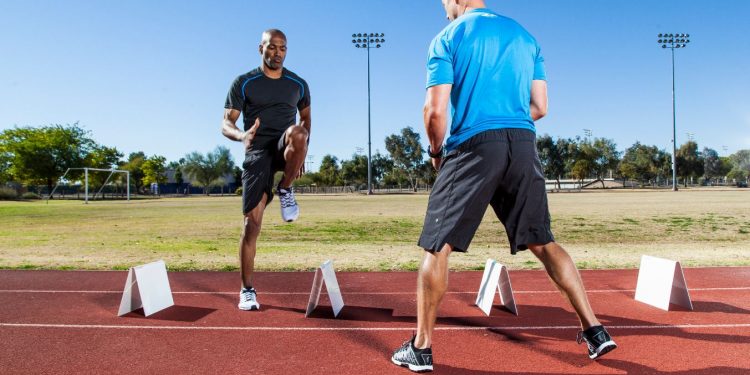The NASM Performance Enhancement Specialization (NASM-PES) was developed to teach fitness professionals how to elevate an athlete’s training to achieve noticeable results while also decreasing the chance for injury. When working with athletes, the most important responsibility of a fitness professional is to ensure safety both on and off the playing field. The opportunity to put these types of skills and knowledge to work is huge. Consider injury rates in collegiate athletes, who have an estimated 11,000 ankle sprains annually (Hootman, Dick & Agel 2007). For these athletes, the initial injury can lead to reoccurring ankle sprains and even osteoarthritis later in life. Knee injuries are another common occurrence in sports (Saltzman et al. 2005). Following an ACL injury requiring surgical intervention, only 75% of those individuals are able to return to previous activity levels (Noyes et al. 1983). These staggering numbers establish a need for fitness professionals to have the knowledge and skills to work with athletes to not only prevent injury but assist athletes in returning to their previous levels of performance post-injury. The NASM Performance Enhancement Specialization provides the tools to accomplish these goals, while also assisting athletes in improving their own skill set.
Athletes expect results for the time, effort and dollars that they put into their training. Their goal is to improve their performance—a fitness professional’s goal is to get them to that level while keeping them in the game and off the injured list. Enhancing performance occurs in systematic and progressive steps. This is one of the many reasons why understanding an integrated training system is so important for fitness professionals who are working with athletes of any level. Applying the integrated, functional approach of the NASM-PES course to athletic development will lead to high levels of dynamic flexibility, core strength, neuromuscular control, power, speed, agility, quickness and functional strength. From stabilization to maximal power development, each component of training is going to assist an athlete in reaching their peak performance capabilities while avoiding the rehabilitation room.
In order to increase performance, the fitness professional also needs to have a solid understanding of multiple training concepts. One example is understanding the stretch-shortening cycle and how to effectively use it within an athlete’s training program. Here, by capturing the power of an eccentric muscle contraction and transferring it to an explosive concentric contraction, the athlete will be able to develop high levels of power in athletic activities. When applied appropriately, this can be utilized across all planes of motion. Sports occur in all three planes, often times simultaneously, not just in one or two planes. It is important that the athlete has the ability to stabilize, reduce and produce forces in all three planes effectively, or they risk a reduced level of performance and an increased likelihood of injury.
Ultimately, a well-designed performance enhancement program will improve an athlete’s ability to execute their sports skills on the playing field while preventing injuries that could sideline them. If you’re ready to expand your training skills to meet the needs of the serious athlete, weekend warrior or league player, check out the updated NASM Performance Enhancement Specialization.
References
Hootman, J., Dick, R. & Agel, J. 2007. Epidemiology of collegiate injuries for 15 sports; summary and recommendations for injury prevention initiatives. Journal of Athletic Training, 42, 311-319.
Noyes, F., et al. 1983. The symptomatic anterior cruciate-deficient knee. Part I: the long-term functional disability in athletically active individuals. Journal of Bone and Joint Surgery AM, 65, 154-162.
Saltzman, C., et al. 2005. Epidemiology of ankle arthritis; report of a consecutive series of 639 patients from a tertiary orthopaedic center. Iowa Orthopaedic Journal, 25, 44-46.

















